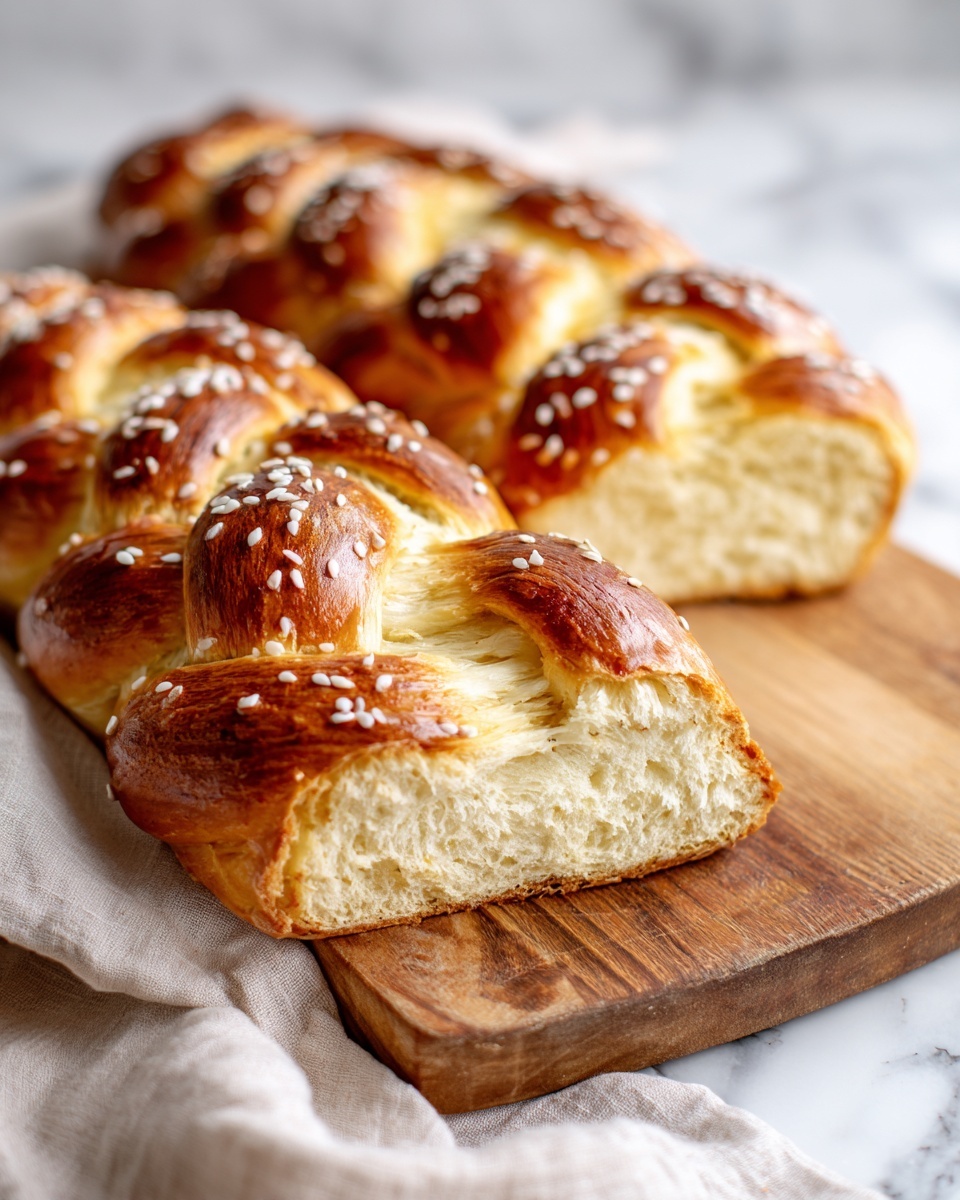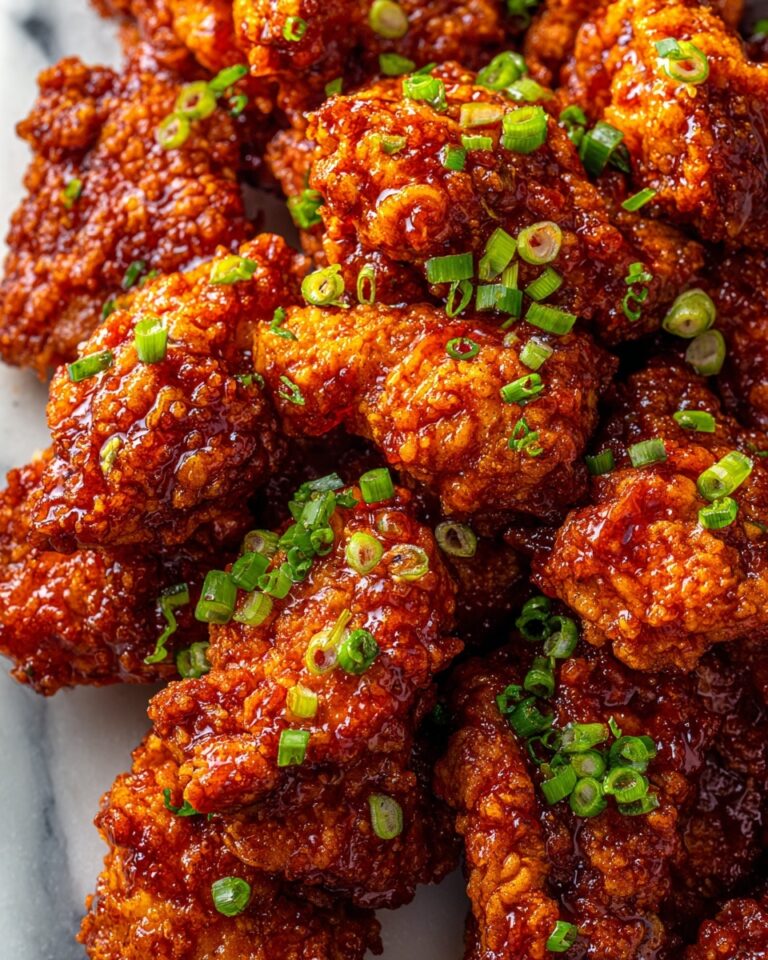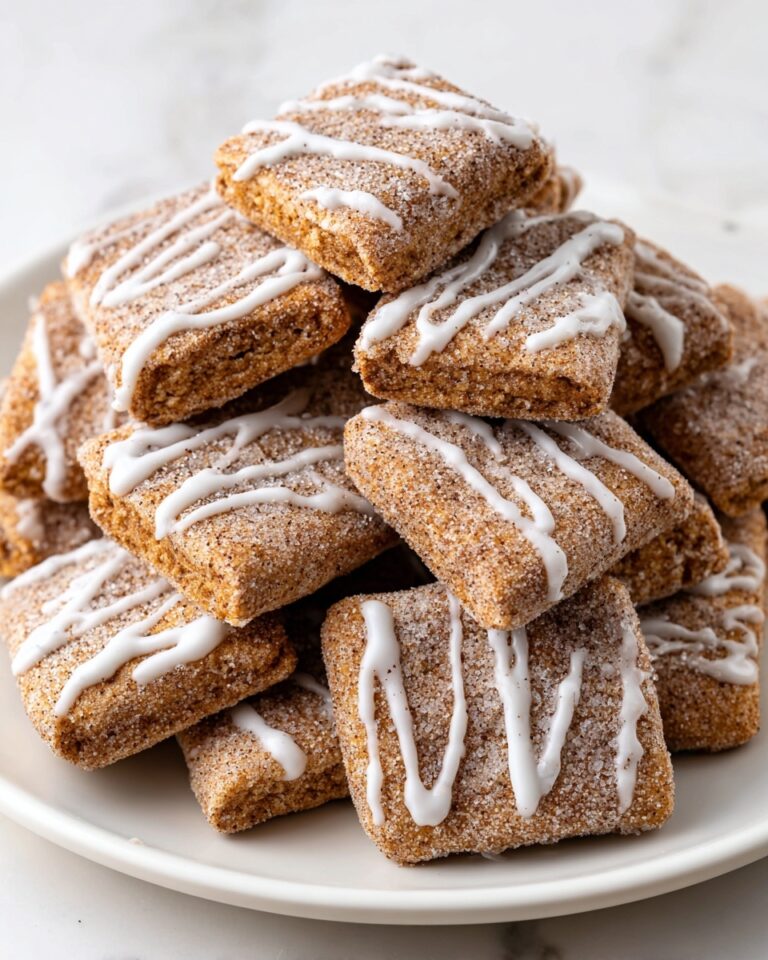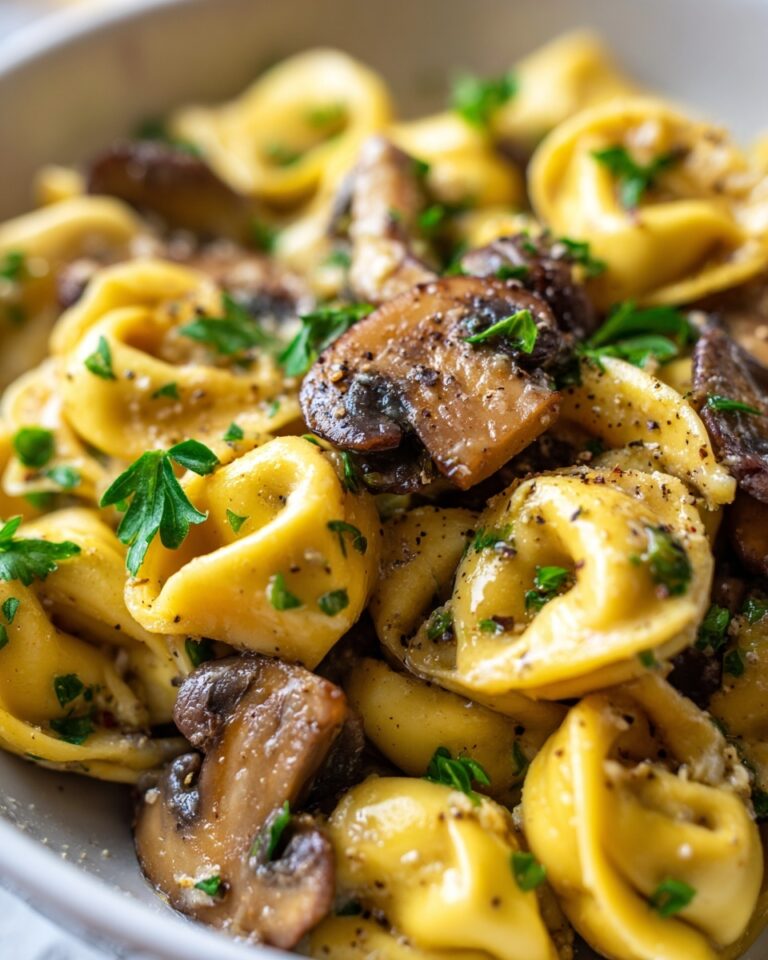If you’ve ever wanted to experience the warm, comforting aroma of fresh-baked bread filling your home while enjoying a soft, fluffy slice that melts in your mouth, then this Challah Bread Recipe is exactly what you need. This traditional Jewish braided loaf boasts a golden crust and a subtly sweet flavor that’s perfect whether you’re celebrating a holiday, crafting an unforgettable sandwich, or simply savoring it fresh from the oven with a pat of butter. The magic of this Challah Bread Recipe lies in its tender crumb and the beautiful braid that makes it as stunning as it is delicious.
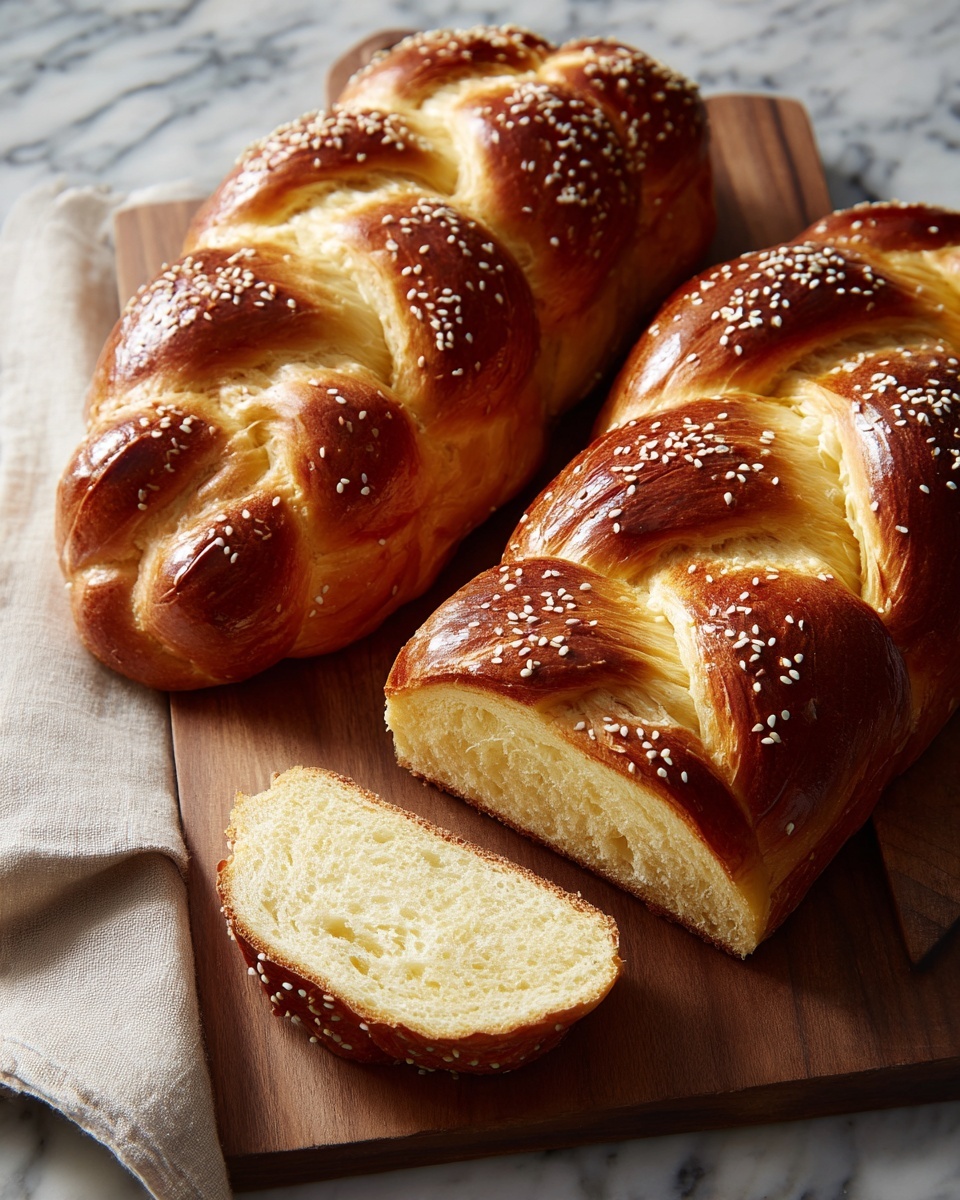
Ingredients You’ll Need
This recipe calls for simple, wholesome ingredients that come together harmoniously to create the perfect texture, flavor, and color of traditional Challah bread. Each element plays a special role—from the yeast that creates a delicate rise to the eggs that add richness and that characteristic golden hue.
- 4 cups all-purpose flour: The foundation of any good bread, providing structure and chew.
- 1 packet (2 1/4 teaspoons) active dry yeast: The magic ingredient that helps the dough rise and become airy.
- 1/4 cup granulated sugar: Adds a subtle sweetness to balance the bread’s flavor.
- 1 teaspoon salt: Enhances the savory notes and balances sweetness.
- 1 cup warm water (about 110°F): Activates the yeast and combines the dough ingredients.
- 1/4 cup vegetable oil: Keeps the bread moist and tender.
- 2 large eggs: Enrich the dough and contribute to the bread’s soft texture.
- 1 egg yolk (for dough): Adds extra richness and contributes to the bread’s golden crumb.
- 1 egg (for egg wash): Creates that shiny, beautiful crust after baking.
- 1 tablespoon water (for egg wash): Helps thin the egg to brush easily.
- Sesame or poppy seeds (optional): For a final decorative touch and an added nutty flavor.
How to Make Challah Bread Recipe
Step 1: Activate the Yeast
Begin your Challah Bread Recipe by combining warm water, yeast, and a teaspoon of sugar in a large bowl or your stand mixer’s bowl. Let this mixture sit undisturbed for 5 to 10 minutes until it becomes foamy. This step is crucial as it wakes up the yeast, ensuring your bread will have a lovely lift and texture.
Step 2: Combine Wet Ingredients
Once your yeast mixture is bubbly, add in the remaining sugar, vegetable oil, eggs, egg yolk, and salt. Mix everything together to integrate these flavors fully and prepare for the flour addition. This rich blend is the soul of your dough, giving Challah its characteristic softness and slightly sweet taste.
Step 3: Add Flour Gradually and Knead
Next, gradually add the flour, one cup at a time. This helps you achieve that perfect dough consistency—soft but only slightly sticky to the touch. After the dough comes together, knead it for 8 to 10 minutes until it becomes smooth and elastic, which develops the gluten structure critical for that light crumb.
Step 4: First Rise
Transfer your dough into a greased bowl, cover it with a clean kitchen towel or plastic wrap, and let it rest in a warm spot. Give it about 1 to 1.5 hours to double in size. This rise is where your dough gains that billowy airiness and delicate texture.
Step 5: Shape Your Loaf
Punch the dough down gently to release trapped air, then divide it into 3 or 4 equal portions. Roll each portion into long ropes and braid them carefully to create that iconic Challah look. Place your beautiful braid onto a parchment-lined baking sheet. Cover it again and allow it to rise for another 30 to 45 minutes. This second rise lets the loaf puff up further for a soft, tender crumb.
Step 6: Prepare for Baking
Preheat your oven to 350°F (175°C). While it heats, whisk together 1 egg with 1 tablespoon of water to create your egg wash. Brush this glossy mixture generously over your braided loaf to create a shiny, golden crust. Sprinkle on sesame or poppy seeds if you like the added crunch and flavor.
Step 7: Bake to Perfection
Bake your loaf for 25 to 30 minutes, until the top is beautifully golden brown and the bread sounds hollow when tapped. Once baked, transfer it to a wire rack to cool. Cooling is important to let the inside finish setting so every slice will be tender and satisfying.
How to Serve Challah Bread Recipe

Garnishes
While the classic egg wash and seeds are a beautiful finish, feel free to get creative! A sprinkle of sea salt or a dusting of powdered sugar can bring out different aspects of flavor. Fresh herbs or edible flowers might add a lovely, unexpected twist when serving at festive occasions.
Side Dishes
Challah is wonderfully versatile. It pairs beautifully with savory dishes like shakshuka, creamy dips, or robust stews. You can also enjoy it simply with butter, or alongside a bowl of soup for a comforting meal that warms your soul.
Creative Ways to Present
Turn your Challah Bread Recipe into star dishes by making deluxe French toast, bread pudding, or even a sweet sandwich with fruit and cream cheese. Braided dough slices can be toasted and topped with honey or tahini for an irresistible snack or breakfast treat.
Make Ahead and Storage
Storing Leftovers
If you find yourself with leftover Challah, wrap it tightly in plastic wrap or store it in an airtight container at room temperature. It will stay fresh and soft for up to 3 days, perfect for sandwiches or dipping in olive oil.
Freezing
Challah freezes beautifully, making it easy to enjoy later. Slice the loaf first, then place parchment paper between slices to avoid sticking, and wrap tightly in plastic wrap followed by foil. Freeze for up to 3 months and thaw slices as needed.
Reheating
When ready to eat, reheat Challah slices gently in a toaster or oven until warm and slightly crisp on the edges. This brings back some of the bread’s original freshness and enhances its delightful texture.
FAQs
Can I make Challah bread without eggs?
Eggs are key to Challah’s rich texture and golden color, but you can substitute with flax eggs or applesauce if needed for dietary reasons. Keep in mind the texture will be slightly different but still delicious.
How long does Challah bread last?
Fresh Challah lasts about 2 to 3 days at room temperature when stored properly. For longer storage, freezing is best to maintain softness and flavor.
Is it necessary to braid Challah?
Braiding is traditional and creates its iconic look, but you can also shape the dough into a round or simple loaf if you prefer. The flavor and texture remain wonderful either way.
Can I add raisins or other mix-ins?
Absolutely! Adding raisins or other dried fruits before braiding gives the bread a touch of sweetness that many people love. Just be sure to not overload the dough so it still rises well.
What is the best flour to use for Challah?
All-purpose flour works perfectly for this Challah Bread Recipe, giving good structure and crumb. You can experiment with bread flour for a chewier texture or mix in some whole wheat for added flavor.
Final Thoughts
There’s something truly special about making Challah bread at home—the smell, the look, the taste all come together to create a memorable experience. This Challah Bread Recipe invites you to embrace the cozy ritual of baking and enjoying a loaf that’s soft, slightly sweet, and just irresistible. Once you try it, you’ll find yourself reaching for this recipe again and again, whether for celebrations or everyday moments that deserve something a little extra. So go ahead, roll up your sleeves, and braid your way into deliciousness!
Print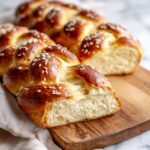
Challah Bread Recipe
- Prep Time: 20 minutes
- Cook Time: 30 minutes
- Total Time: 2 hours 30 minutes
- Yield: 1 loaf (about 10 slices)
- Category: Bread
- Method: Baking
- Cuisine: Jewish
- Diet: Vegetarian
Description
Challah bread is a traditional Jewish braided loaf known for its soft, fluffy texture and subtly sweet flavor. With its golden crust and tender crumb, it’s perfect for holiday celebrations, sandwiches, or simply served warm with butter.
Ingredients
Dough Ingredients
- 4 cups all-purpose flour (plus more as needed)
- 1 packet (2 1/4 teaspoons) active dry yeast
- 1/4 cup granulated sugar
- 1 teaspoon salt
- 1 cup warm water (about 110°F)
- 1/4 cup vegetable oil
- 2 large eggs
- 1 egg yolk (for dough)
Egg Wash
- 1 egg
- 1 tablespoon water
Toppings (Optional)
- Sesame seeds or poppy seeds
Instructions
- Activate the yeast: In a large bowl or stand mixer, combine warm water, yeast, and 1 teaspoon of the sugar. Let it sit for 5–10 minutes until the mixture becomes foamy, indicating the yeast is active.
- Mix wet ingredients: Add the remaining sugar, vegetable oil, 2 large eggs, egg yolk, and salt to the yeast mixture. Mix until fully combined to prepare the dough base.
- Add flour and form dough: Gradually add the all-purpose flour, one cup at a time, mixing after each addition until a soft, slightly sticky dough forms. Knead the dough for 8–10 minutes until it becomes smooth and elastic.
- First rise: Place the kneaded dough into a greased bowl, cover it with a clean towel or plastic wrap, and let it rise in a warm place for 1 to 1.5 hours, or until it has doubled in size.
- Shape the loaf: Punch down the risen dough and divide it into three or four equal parts. Roll each part into a rope and braid them together to form the loaf.
- Second rise: Place the braided loaf on a parchment-lined baking sheet. Cover and let it rise again for 30–45 minutes, allowing it to puff up before baking.
- Prepare egg wash and preheat oven: While the dough is rising, preheat the oven to 350°F (175°C). In a small bowl, whisk 1 egg with 1 tablespoon water to make the egg wash. Brush the egg wash generously over the surface of the braided loaf. Sprinkle with sesame or poppy seeds if desired.
- Bake the challah: Bake the loaf in the preheated oven for 25–30 minutes until the top is golden brown and the loaf sounds hollow when tapped.
- Cool and serve: Remove the challah from the oven and transfer it to a wire rack to cool completely before slicing and serving.
Notes
- Challah is best enjoyed fresh but also makes excellent French toast or bread pudding.
- For a sweeter variation, add raisins to the dough before braiding.
- You can substitute poppy seeds for sesame seeds or omit toppings altogether based on your preference.
- Ensure water temperature is around 110°F to properly activate the yeast without killing it.
- If dough is too sticky, add flour gradually, but avoid making the dough too stiff to maintain softness.

